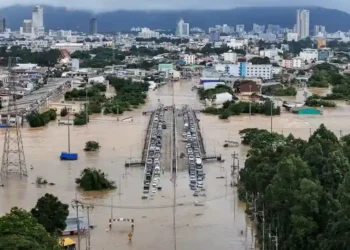Published: October 17, 2025, 22:45 EDT
A new global climate study warns that the planet is on course to endure nearly two additional months of dangerous, extremely hot days each year by the end of the century. While the findings underscore the intensifying threat of global warming, scientists say international efforts to reduce greenhouse gas emissions since the 2015 Paris Agreement have prevented an even more catastrophic outcome.
Climate Action Has Softened the Blow, Study Finds
According to research released Thursday by World Weather Attribution and Climate Central, global emissions cuts launched over the past decade have significantly reduced projected future heat extremes. Without those interventions, Earth would be heading toward 114 extra superhot days per year. Thanks to current pledges, that number has dropped to 57 additional days on average.
The study used computer simulations and historical temperature data to assess how climate policies have altered the frequency of extreme heat days — defined as days hotter than 90% of comparable dates between 1991 and 2020. Researchers examined global averages and individual country data under two scenarios: one where nations meet their current emission pledges (warming limited to 2.6°C above preindustrial levels), and another where global temperatures rise by 4°C, as was once projected before the Paris accord.
“This reflects both the success and the shortfall of the Paris Agreement,” said Victor Gensini, a climate scientist at Northern Illinois University. “We have slowed the rate of warming, but we haven’t done nearly enough to protect vulnerable regions.”
Heat Waves Intensify: ‘Pain and Suffering’ Ahead
The world has already added an average of 11 superhot days per year since 2015, the study found. These periods of extreme heat are increasingly sending people to emergency rooms and claiming lives, especially in regions with limited infrastructure and healthcare capacity.
“There will be pain and suffering because of climate change,” said Kristina Dahl, Climate Central’s vice president for science and a co-author of the report. “But the difference between 4°C of warming and 2.6°C of warming represents the hard-won progress of the past decade. That gives me hope.”
Friederike Otto of Imperial College London, another co-author, said the rising temperatures will “definitely affect tens of thousands or even millions of people,” adding that thousands already die from heat waves each year.
Researchers estimate that by century’s end, a weeklong southern European heat wave like the one in 2023 will be 70% more likely and 0.6°C (1.1°F) warmer than similar events a decade ago. If global emissions remain on their current trajectory, comparable heat waves could become 3°C (5.4°F) hotter by 2100.
In North America, a heat wave similar to the one that struck the southwestern United States and Mexico in 2024 could be 1.7°C (3.1°F) warmer under current trends.
Climate Inequality: Poorer Nations Hit Hardest
The report’s most striking finding is the imbalance between those most responsible for carbon emissions and those suffering the greatest effects. The 10 countries expected to endure the sharpest increase in superhot days are largely small, low-emitting island or coastal nations — including the Solomon Islands, Samoa, Panama, and Indonesia.
For example, Panama is projected to experience 149 additional superhot days each year, despite contributing just a fraction of global greenhouse gas emissions. Collectively, the top 10 hardest-hit nations produce only 1% of the world’s carbon emissions but will bear nearly 13% of the additional extreme heat days.
By contrast, the world’s top three emitters — the United States, China, and India — are expected to face only 23 to 30 extra superhot days annually, despite being responsible for 42% of the planet’s carbon dioxide emissions.
“This report quantifies what climate scientists have warned for decades,” said Andrew Weaver of the University of Victoria, who was not involved in the research. “The impacts of global warming will fall hardest on developing nations that contributed the least to the problem. This growing inequality will deepen geopolitical tensions.”
Regional Impacts Across the United States
Within the United States, Hawaii and Florida are projected to see the steepest increases in extreme heat days, while Idaho will experience the smallest rise. Even in wealthy nations, the burden will fall disproportionately on low-income and outdoor-working populations, particularly in southern states.
Kristie Ebi, a public health and climate expert at the University of Washington, said the data aligns with peer-reviewed research showing “hundreds of thousands of heat-related deaths in recent years,” much of it driven by human-caused climate change.
A Mixed Picture Before Global Climate Talks
The release of the study comes just weeks before nearly 200 nations gather in Brazil for the next round of United Nations climate negotiations. Scientists and policymakers are preparing to review progress since the Paris Agreement — and to assess whether new commitments can still prevent the worst climate outcomes.
While experts acknowledge that the world has avoided the most extreme warming scenario, they warn that current efforts remain insufficient. “The fact that we’re no longer on the 4-degree path is not a reason for comfort,” said Johan Rockström, director of the Potsdam Institute for Climate Impact Research. “Even 2.6 degrees of warming would mean a disastrous future for billions.”
This article was rewritten by JournosNews.com based on verified reporting from trusted sources. The content has been independently reviewed, fact-checked, and edited for accuracy, neutrality, tone, and global readability in accordance with Google News and AdSense standards.
All opinions, quotes, or statements from contributors, experts, or sourced organizations do not necessarily reflect the views of JournosNews.com. JournosNews.com maintains full editorial independence from any external funders, sponsors, or organizations.
Stay informed with JournosNews.com — your trusted source for verified global reporting and in-depth analysis. Follow us on Google News, BlueSky, and X for real-time updates.














